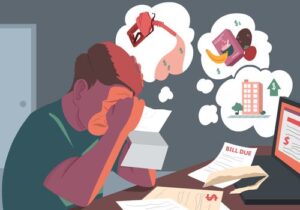READ TIME: 3 MIN
With half the year behind us, now is a great time to consider what the remainder of 2022 may hold. However, with inflation and economic uncertainty causing many of us to delay or cancel vacations, large purchases, and more, it can be challenging to know where to start.
Here are a few tips to help make the rest of the year as smooth as possible:
1. Deflate Inflation
Summer travel is picking up, but travel-related costs have skyrocketed, causing many to delay or cancel vacation plans. But are you overreacting to current headlines?
If you are thinking of heading to Europe, you may notice that you get more bang for your buck. Why is that? For the first time in almost 20 years, the U.S. dollar and the euro have reached parity. Souvenirs will be cheaper for Americans, but Europeans coming this direction may feel the pinch of more expensive goods and services.
The U.S. dollar has strengthened against the euro in part because of differences in monetary policy. The U.S. has been raising rates to slow inflation, while the European Central Bank (ECB) has been hesitant for fear of slowing economic growth. However, with the ECB expected to raise short-term rates this month for the first time in over a decade, euro/dollar parity may be short-lived.
Let’s talk if you’re wavering on a scheduled trip. And if you’re headed to Europe, send me a vacation photo!
2. Embrace Uncertainty
If you’ve delayed a major purchase lately, you’re not alone. Economic uncertainty has caused many to rethink their expenditures. When your net worth declines, the “wealth effect” tells consumers to rein in spending. But our portfolio strategy takes into account periods of market volatility.
At the risk of slowing economic growth, the Fed has driven short-term rates higher to rein in inflation. But it’s a tricky proposition. Raise rates too much, and you may trigger a recession. Don’t raise rates enough, and you won’t be able to restore price stability. The Fed is looking for a Goldilocks moment when its monetary policy is “just right” to create a soft landing for the economy.
You may not have noticed, but early evidence shows inflation is starting to slow. I’m confident the Fed sees it, too. However, most people judge inflation by prices at the gas station and the grocery store, so inflation is genuine and painful until those prices trend lower.
3. Practice Patience
The need to take action can push even the most seasoned investors into questionable territory. Instead, try to take a long view of the markets.
I remain an optimist. History shows that economies and markets move in cycles, so I believe the current trend is healthy in the long term. I also think smart economists at the Fed are making difficult decisions following an extraordinary couple of years.
Our best days are ahead. I’m excited for the second half of 2022 and expect things will look pretty different by year’s end. Meanwhile, I’d advise taking a step back from daily news for a while.
Let us know if you ever want to chat about your future goals or current economic conditions. We’re always ready to help.


Recent Comments